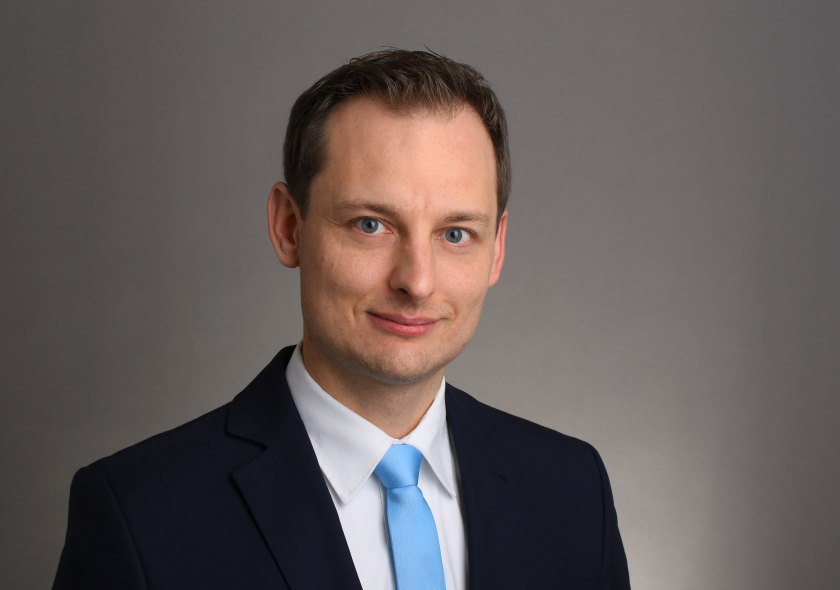Professorship at the University of Augsburg for Felix Büttner

Prof. Dr. Felix Büttner has been called at the University Augsburg. He heads now a joint research group at HZB. © Uni Augsburg
Felix Büttner has led a junior research group at HZB. Now he has accepted a call to the University of Augsburg. As head of a joint research group, he will continue his studies of magnetic skyrmions at BESSY II.
Felix Büttner has been leading a junior research group at HZB since the beginning of 2020, funded by the Young Investigator Grant of the Helmholtz Association. In spring 2022, he was awarded the Walter Schottky Prize of the German Physical Society for his pioneering achievements in the field of magnetic skyrmions. Since July, he holds a professorship at the Institute of Physics, University Augsburg.
Felix Büttner studied in Göttingen and received his doctorate in 2013 for his work at the interface of magnetism and X-ray physics. After a stint in industry at Daimler AG, he worked as a postdoctoral researcher at the Massachusetts Institute of Technology from 2015-2020.
Prof. Dr. Büttner investigates nanotextures in magnetic thin-film materials and drives the development of ultrahigh-resolution X-ray microscopy techniques. The aim is to understand the particle-like dynamics of such topological textures and to prepare their application in information technology.
Under a cooperation agreement between the University of Augsburg and HZB, Büttner will work one day a week at HZB, where he runs laboratories in Wannsee and carries out measurements at BESSY II. His research group will remain in full size.
red./arö
https://www.helmholtz-berlin.de/pubbin/news_seite?nid=24027;sprache=en
- Copy link
-
The twisted nanotubes that tell a story
In collaboration with scientists in Germany, EPFL researchers have demonstrated that the spiral geometry of tiny, twisted magnetic tubes can be leveraged to transmit data based on quasiparticles called magnons, rather than electrons.
-
Bright prospects for tin perovskite solar cells
Perovskite solar cells are widely regarded as the next generation photovoltaic technology. However, they are not yet stable enough in the long term for widespread commercial use. One reason for this is migrating ions, which cause degradation of the semiconducting material over time. A team from HZB and the University of Potsdam has now investigated the ion density in four different, widely used perovskite compounds and discovered significant differences. Tin perovskite semiconductors produced with an alternative solvent had a particular low ion density — only one tenth that of lead perovskite semiconductors. This suggests that tin-based perovskites could be used to make solar cells that are not only really environmentally friendly but also very stable.
-
Synchrotron radiation sources: toolboxes for quantum technologies
Synchrotron radiation sources generate highly brilliant light pulses, ranging from infrared to hard X-rays, which can be used to gain deep insights into complex materials. An international team has now published an overview on synchrotron methods for the further development of quantum materials and technologies in the journal Advanced Functional Materials: Using concrete examples, they show how these unique tools can help to unlock the potential of quantum technologies such as quantum computing, overcome production barriers and pave the way for future breakthroughs.
